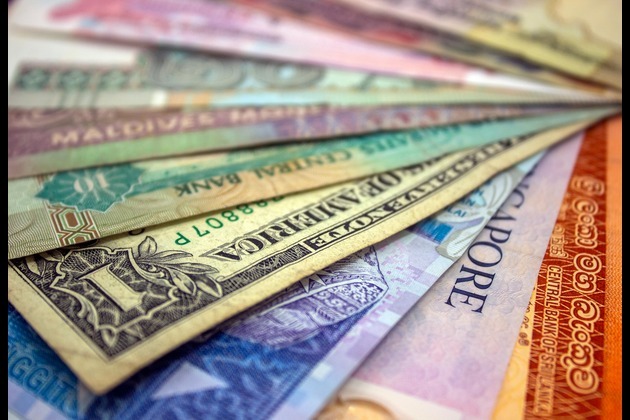How Your Company Can Qualify for R&D Tax Credits
Evertise
06 Jun 2022, 19:54 GMT+10

Although tax reforms introduced a number of changes for businesses, R&D Tax Credits continue to provide opportunities for companies to reduce their income tax liabilities-saving them hundreds of thousands in dollars!
But not all companies are able to benefit from R&D credit due to a number of misconceptions surrounding its relevance to their operations.
Most of the time, businesses are unable to claim their R&D credit due to the confusion concerning qualifying activities and expenditures, documentation, as well as how the credit can be utilized.
Understanding these topics can provide business owners the basis for identifying and claiming R&D tax credit-and reducing their tax burden.
This article will attempt to explore and answer commonly asked questions about R&D tax credits below:
What is the R&D Tax Credit?
The R&D credit can be availed by companies developing new and/or better business elements, such as processes, products, inventions, formulas, computer software, and techniques, that lead to better performance, quality, functionality and reliability. R&D credit is available at the federal and state level, with more than 30 states providing credit to counteract state tax liability.
How Can a Company Know it is Eligible for R&D Tax Credit?
There is more to R&D credit eligibility than many companies realize. It isn't only applicable to product development, but to activities and operations such as software development, quality improvements, and new manufacturing processes as well. Start-ups can also apply the R&D credit against their payroll tax up to five years.
Your company can qualify for the R&D tax credit under the following conditions:
- Your company spends time and effort in creating new or innovative products/services
- Your company improves existing products/ services
- Establish or creates patents, prototype, software, and processes
- Employs engineers, scientists, and designers
There are also cases where R&D tax credits are retroactive. Depending on when you filed your tax return, you can claim R&D credits for three years before open tax years. Loss companies can go back even further, with some states allowing over three years for retrospective claims.
How Do Companies Benefit from the R&D Tax Credit?
R&D tax credit is a dollar-for-dollar tax savings that can significantly reduce a company's tax liability. There's no limit to the amount of expenses and credit that companies can claim every year. If a company is unable to use a federal R&D credit immediately or fully consume it, any unused credit can be carried back one year or carried forward for up to 20 years! Each state has different carryover rules, so be sure to check yours first.
R&D tax credit provides regularly finance a wide range of businesses-up to 10% of annual R&D costs for federal costs and much more when you include state credits.
Common Misconceptions About R&D Tax Credits: Why Companies Think They Don't Qualify
Many companies are unable to claim their R&D credits due to some common misconceptions that prevent them from doing so. They are as follows:
- They aren't paying Federal Income Tax
Startups and small businesses can apply for up to $1.2 million-or $250,000 every year for up to five years-of the federal R&D credit. This is to counteract the Federal Insurance Contributions Act (FICA) part of their yearly payroll taxes.
To qualify, a company must satisfy the following requirements:
- Under $5 million in gross receipts for the credit year
- No gross receipts or interest income that dates back for over 5 years
The R&D credit is decided on the federal income tax return and may be used against payroll taxes, starting on the quarter after the credit is decided on. The R&D credit can be used against payroll taxes as early as April the next year for calendar-year taxpayers.
- The Company Doesn't Focus on R&D
R&D tax credit isn't only awarded to companies that focus on tech and life sciences. In fact, most companies that qualify for the R&D tax credit do not have R&D laboratories, but rather perform their R&D on their production floors, wineries, distilleries, test kitchens, fields, and similar locations. R&D may be found wherever experimentation happens.
- The Company Doesn't Employ Scientists or Degree-Holding Engineers
Companies that employ large numbers of scientists and engineers are often recognized as candidates for R&D tax credit since the credit was designed to encourage people to research and experiment on the hard sciences.
This applies to all companies regardless of who carries out the activities and includes employees with different job titles and backgrounds. Experiments by employees and third-party contractors involved in the improvement of processes and products may be included.
- There isn't anything New Being Developed by the Company
R&D tax credits are granted to taxpayers that create, develop, design or improve products, techniques, processes, formulas, or software. It is meant to reward companies in pursuit of innovation with more investment.
But R&D doesn't have to be anything 'new' or 'groundbreaking' to the industry. It only has to be something that's new to the company, which must meet the four-part test for R&D tax credit.
- The Company is Reliant on the Alternative Minimum Tax (AMT)
Many companies conducting research and development haven't completely benefited from the credit because they or their shareholders relied on the alternative minimum tax (AMT).
But a new development for tax years starting on or after January 1, 2016, allowedeligible small businesses (ESBs) or individuals subject to AMT to offset regular taxes and AMT with the R&D tax credit. This means that R&D credits that were previously unusable for ESBs can now be used to reduce AMT.
How Can a Company Claim the R&D Tax Credit?
How much R&D tax credit a company can claim depends on several factors. However, the potential tax savings make it worth looking into. For instance, R&D credits can offset income tax, which can significantly reduce a company's tax obligations in the years where they perform qualified activities.
Companies that haven't taken applied for or taken advantage of the credit can also choose to review all the open tax years-usually 3-4 years depending on when they filed the tax returns-to claim the missed opportunity.
 Share
Share
 Tweet
Tweet
 Share
Share
 Flip
Flip
 Email
Email
Watch latest videos
Subscribe and Follow
Get a daily dose of Charlotte Star news through our daily email, its complimentary and keeps you fully up to date with world and business news as well.
News RELEASES
Publish news of your business, community or sports group, personnel appointments, major event and more by submitting a news release to Charlotte Star.
More InformationBusiness
SectionWall Street diverges, but techs advance Wednesday
NEW YORK, New York - U.S. stocks diverged on Wednesday for the second day in a row. The Standard and Poor's 500 hit a new all-time...
Greenback slides amid tax bill fears, trade deal uncertainty
NEW YORK CITY, New York: The U.S. dollar continues to lose ground, weighed down by growing concerns over Washington's fiscal outlook...
Taliban seeks tourism revival despite safety, rights concerns
KABUL, Afghanistan: Afghanistan, long associated with war and instability, is quietly trying to rebrand itself as a destination for...
Nvidia execs sell $1 billion in stock as AI boom drives record prices
SANTA CLARA, California: Executives at Nvidia have quietly been cashing in on the AI frenzy. According to a report by the Financial...
Tech stocks slide, industrials surge on Wall Street
NEW YORK, New York - Global stock indices closed with divergent performances on Tuesday, as investors weighed corporate earnings, central...
Canada-US trade talks resume after Carney rescinds tech tax
TORONTO, Canada: Canadian Prime Minister Mark Carney announced late on June 29 that trade negotiations with the U.S. have recommenced...
Business
SectionWall Street diverges, but techs advance Wednesday
NEW YORK, New York - U.S. stocks diverged on Wednesday for the second day in a row. The Standard and Poor's 500 hit a new all-time...
Greenback slides amid tax bill fears, trade deal uncertainty
NEW YORK CITY, New York: The U.S. dollar continues to lose ground, weighed down by growing concerns over Washington's fiscal outlook...
Taliban seeks tourism revival despite safety, rights concerns
KABUL, Afghanistan: Afghanistan, long associated with war and instability, is quietly trying to rebrand itself as a destination for...
Nvidia execs sell $1 billion in stock as AI boom drives record prices
SANTA CLARA, California: Executives at Nvidia have quietly been cashing in on the AI frenzy. According to a report by the Financial...
Tech stocks slide, industrials surge on Wall Street
NEW YORK, New York - Global stock indices closed with divergent performances on Tuesday, as investors weighed corporate earnings, central...
Canada-US trade talks resume after Carney rescinds tech tax
TORONTO, Canada: Canadian Prime Minister Mark Carney announced late on June 29 that trade negotiations with the U.S. have recommenced...







